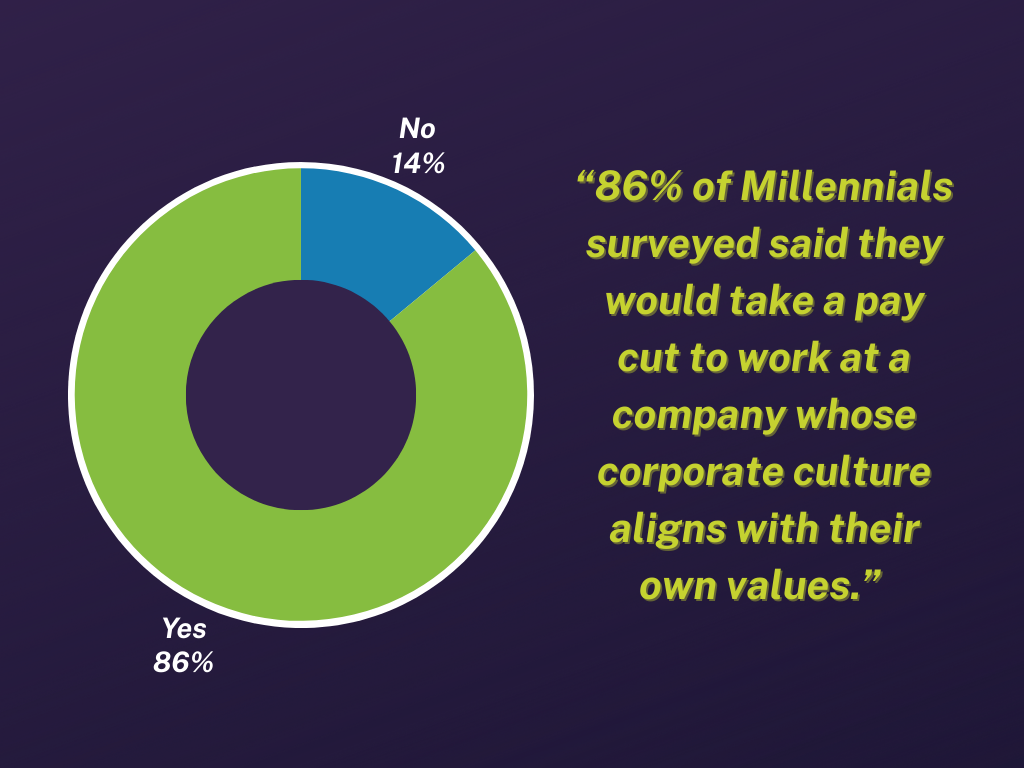Article
Internal Branding and its Impact on Brand Equity


Businesses and brands are inseparable. Every strategic decision, social media post and sales approach used by companies helps strengthen — or sabotage — their brand. According to Inc., almost 90% of organizations asked said it was critical to ensure brand image consistency across customer touchpoints.
Why? Because there's a measurable benefit to effective branding: On average, companies estimated a 23% boost to revenue when their brand generated consistent recognition and engagement. What's more, 71% recognize the potential for customer confusion if branding doesn't align with stated goals or if a presentation doesn't match corporate expectations.
For all the focus on better brand delivery and outcome measurements, however, many businesses ignore a critical component: Internal branding.
What Is Internal Branding?
Internal branding is the process of aligning a company's brand values and goals with its internal company culture and employee perceptions. This ensures that employees fully understand and embody what the brand stands for in their work.
When you create an internal brand identity that matches your external brand, you help create a consistent brand experience for your employees as well as your target audience. When done successfully, this can engender loyalty from key stakeholders and increase brand equity.
Why Internal Branding Matters
How do employees engage with your brand? It's a question that's often overlooked — after all, your staff shapes your company's external value proposition and creates brand value for customers. But shifting workforce populations come with changes to employee expectations.
Millennials now make up the bulk of U.S. workers and according to CNBC, 86%of Millennials surveyed said they would take a pay cut to work at a company whose corporate culture aligns with their own values. As a result, consistent internal branding is now critical for HR teams looking to recruit new talent and retain current staff: If external brand value propositions describe a company that's forward-thinking, environmentally conscious and values the individuality of its workforce, internal branding needs to match.
Employees have become consumers of internal brand identity. Just as consistent external branding can boost overall sales, consistent internal policies can help drive staff satisfaction.
In order to buy into your brand, people on your team need to know who they are and where they’re headed while working for your company. That doesn’t just mean logistically where the company is headed, but also the type of identity the company wants to foster and inhabit. But beyond knowing that trajectory, they need to understand and believe in it.

Building an Internal Brand
An internal branding campaign requires much of the same work that it takes to run an external branding campaign. You’ll need to start with research on your own employees to understand their needs and their mindset when it comes to supporting the brand values.
Among other dimensions, you’ll need to understand:
- How information gets disseminated in the organization
- Where the different subcultures reside within your company culture
- Your team’s understanding of what the brand stands for
- What parts of the brand identity your team is/isn’t proud of
These will inform every aspect of the way they work, which in turn informs the way people see your brand from the outside. If these dimensions don’t align with your brand values, you can focus on those discrepancies to try and turn the internal brand around.
Internal branding requires much of the same work that it takes to run an external branding campaign.
HR Proposition of an Internal Brand
The ultimate goal of internal branding is the same as it is for external branding efforts: To generate brand equity. The Balance Small Business notes that brand equity is often considered intangible — for consumers, it's the impact a brand has on purchasing decisions driven by customer perceptions of company practices and products. Internally, brand equity comprises the alignment of stated brand goals with their actual implementation along with the ability of companies to embrace their own brand messaging.
While the concept of brand equity may be intangible, the benefits are quantifiable: According to Investopedia, consumers attach more value to products made by companies that create high brand equity — internally, these tangible benefits take the form of increased retention, engagement and productivity.
In practice, this means "environmentally-conscious" companies taking steps to reduce internal waste by digitizing documents and using workspace collaboration tools or living up to recruitment promises about opportunities for growth within the organization.
Recent research highlights the value of successful internal branding across three key areas:
- Retention — Work from Chulalongkorn University notes that establishing a consistent internal brand has a positive impact on brand identification among employees. This, in turn, helps improve overall staff retention rates. According to the Center for American Progress, retention also drives cost savings: On average, staff turnover costs companies 21 percent of the lost employee's salary as they onboard, train and acclimate new workers.
- Engagement — Findings from the hospitality industry, meanwhile, suggests that internal branding both improves job satisfaction and staff loyalty, which in turn drives greater productivity: Engaged employees are 17 percent more productive, generate 20 percent higher sales and are absent 41 percent less than non-engaged staff.
- Corporate Identity — In a recent whitepaper, Internal Branding: A University's Most Valuable Intangible Asset, author Rex Whisman notes that effective internal branding can help overcome resistance to corporate-scale branding efforts, in effect using an "inside-out" identity development strategy to align staff culture with long-term branding goals.
The Impacts of Poor Internal Branding
The hard truth is that not all companies have great internal branding. In fact, Forbes reports that just 30% of employees have confidence that their company follows through on internal branding commitments. This leaves a disconnected 70% of employees who are less engaged and therefore less productive than their more satisfied colleagues.
To ensure internal branding has the desired impact, companies can start with a simple question: How do employees describe your brand and service offerings?
One telltale sign of a brand alignment problem is disparate brand descriptions. If one staff member defines your brand as socially conscious while another suggests that your biggest focus is on cost-cutting, chances are, you've got a disconnect.
Day-to-day this disconnect affects internal corporate culture, making it harder for staff to articulate key brand messaging and clearly communicate its impact. As the Forbes piece notes, this limits the ability of staff to authentically deliver brand value to customers, in turn reducing their overall satisfaction and engagement.
When that happens, and customer expectations aren’t met, it damages the integrity of your brand and can lead to long-term challenges and a negative perception of your brand.
The Internal Brands Should Evolve
Internal branding is what builds that connection between your brand and the people actively involved in executing its strategy. It’s an ongoing process that needs to evolve as your brand and long-term corporate strategy evolve, but it’s crucial to making sure that employees understand the overall mission of your organization and are unified by a purposeful strategy
The Inc. article reports that while 95% of organizations have branding guidelines, just one-quarter enforce these guidelines, leading to a full 60% of organizations creating internal and external marketing materials that are inconsistent with brand best practices.
Balancing the forces of brand consistency and change requires an adaptable strategy solution. First, companies must define key brand principles — both external and internal — and ensure they're followed across all written, visual and interactive communications. For HR teams, this creates a unified front when searching for candidates along with a simplified and straightforward set of value statements that clearly communicate company principles. This results in cohesive hiring policies that communicate brand values from initial contact to eventual employment offers.
Accounting for the changeable nature of brand messaging, meanwhile, requires regular reassessment of materials and mission statements. While there's no hard-and-fast rule here, yearly (or bi-yearly) evaluations of the brand impact that include employee feedback can help identify key trends and keep companies ahead of potential branding pitfalls.
Internal Branding Builds a Strong Foundation
Without consistent messaging, both staff and consumers will create their own version of your brand — for better or worse. Externally, this impacts both the size of your potential client base and its composition. Internally, consistent commitment to the brand promise empowers HR to recruit new talent, reward employees and keep staff engaged while allowing other employees to clearly and accurately deliver brand messaging in their marketing efforts.
At the end of the day, your employees are the most important stakeholders for your company. They create and deliver the products or services that cause customers to keep coming back. So build your brand from the inside out to provide a foundation for customers and other stakeholders that gives them a reason to believe in your brand.
A Few Extra Insights
Hopefully, we've helped you better understand the importance of having a healthy internal brand. If you're considering taking a look at your brand health, we're happy to chat. To help you think through this topic a bit further, here are a few extra insights:
- Find out how to align your brand with your company ethos.
- Learn about what it takes to build believers in your brand to help your company grow.



